Wi-Fi 6 is the next big thing happening to Wi-Fi network in 2020 with many new devices going to support this feature. With that, TP-Link launched their latest Archer AX6000 developed to provide the best WiFi performance and strong coverage.
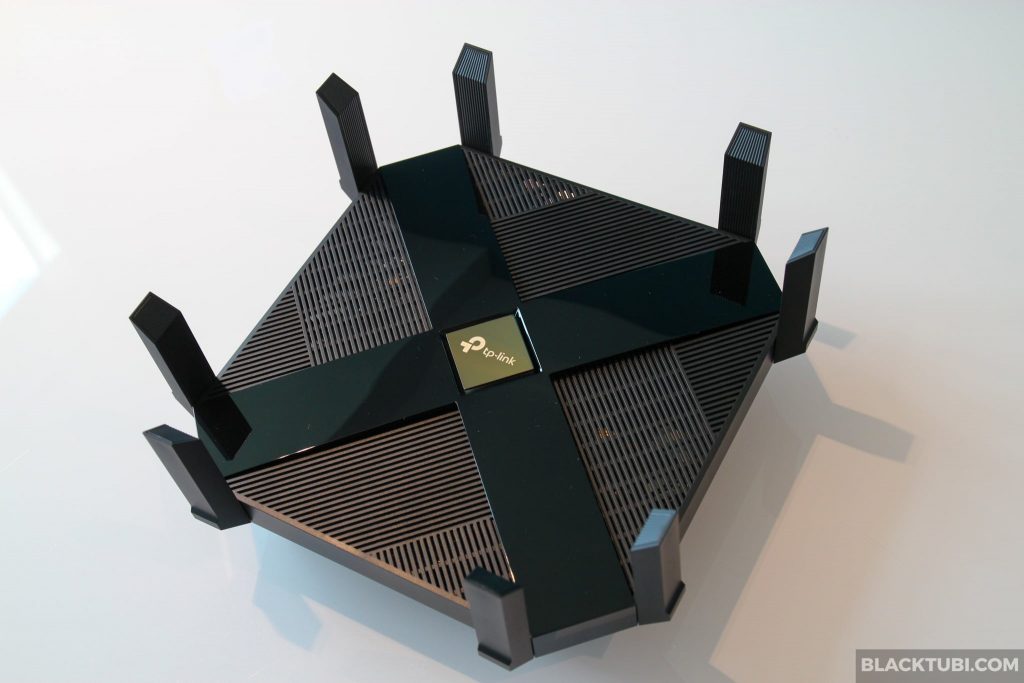
Table of Contents
The Archer AX6000 is one of the most expensive routers in TP-Link lineup after the flagship Archer AX11000. It will replace the previous Archer C3150 and Archer C5400 with new features added and a significantly improved hardware for better performance. The star of this product is the addition of Wi-Fi 6 capability.
TP-Link Archer AX6000 comes with a totally new design and it looks really good. The router is a square design with 8 external non-removable antennas. The top of the device is full of ventilating holes to keep the high performance quad-core CPU cool during operation. The antennas are can be folded down for transportation.
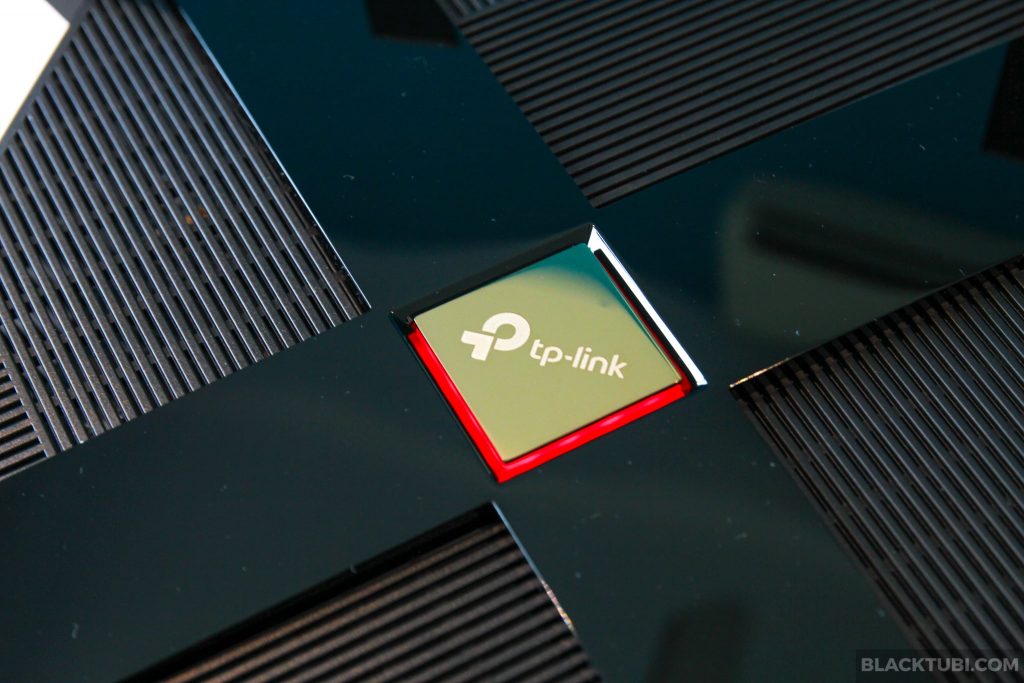
The status indicator is under the golden metal plate with a glowing effect when the router is operation. While it looks good, it will be hard to determine the status of the router compared to having multiple individual status indicator. We would prefer if TP-Link add at least some indicators to show the status of the router.
Now, the router is heavy and there’s a very good reason for this. Since the product is cooled passively, it has multiple huge heatsinks to allow the product to be cooled more effectively to main the high-performance by the Quad-Core CPU on this router.
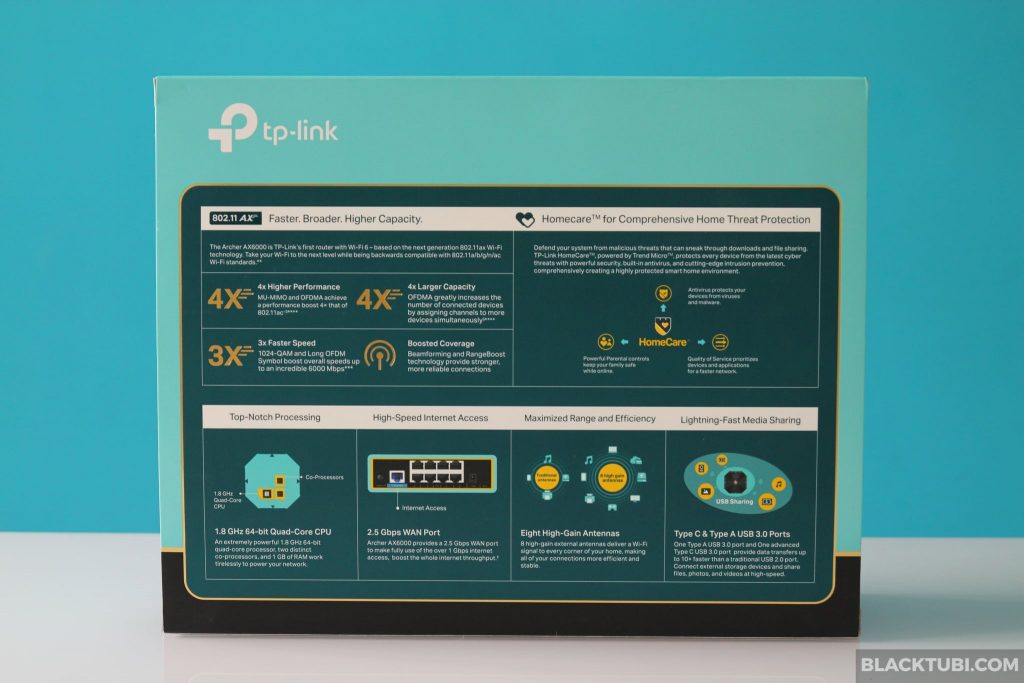
Wi-Fi 6 or Wireless AX is the latest Wi-Fi technology after Wireless AC. Without going into the technical details, Wi-Fi 6 will provide a much faster Wi-Fi speed and better stability due to improved spectrum utilization. It is also much more efficient in resource allocation, leading to better performance at a congested location such as a condominium.
If you have a Wi-Fi 6 device like the latest iPhone 11, using it with a Wi-Fi 6 router will give you much better Wi-Fi speed compared to using an older wireless router. The Archer AX6000 will also bring improved Wi-Fi performance to existing Wireless AC devices as a result of hardware improvements.
Hardware and Specs
The specs on TP-Link Archer AX6000 is top of the line with a Broadcom 1.8Ghz Quad-Core CPU and a 1GB RAM to deliver the best performance. In fact, the CPU and the RAM amount is the same as the flagship Archer AX11000 gaming router. You can refer to the full specs at TP-Link website.
| Wireless 2.4Ghz | Wireless AX up to 1148Mbps (40Mhz 4X4) |
| Wireless 5Ghz | Wireless AX up to 4804Mbps (160Mhz 4X4) |
| WiFi Features | OFDMA, MU-MIMO, Beamforming, WPA3 |
| CPU | Broadcom BCM4908 1.8Ghz Quad-Core CPU |
| RAM | 1GB |
| Ports | 1x 2.5G WAN port + 8x Gigabit LAN port |
| 1 USB 3.0 port + 1 USB-C 3.0 port |
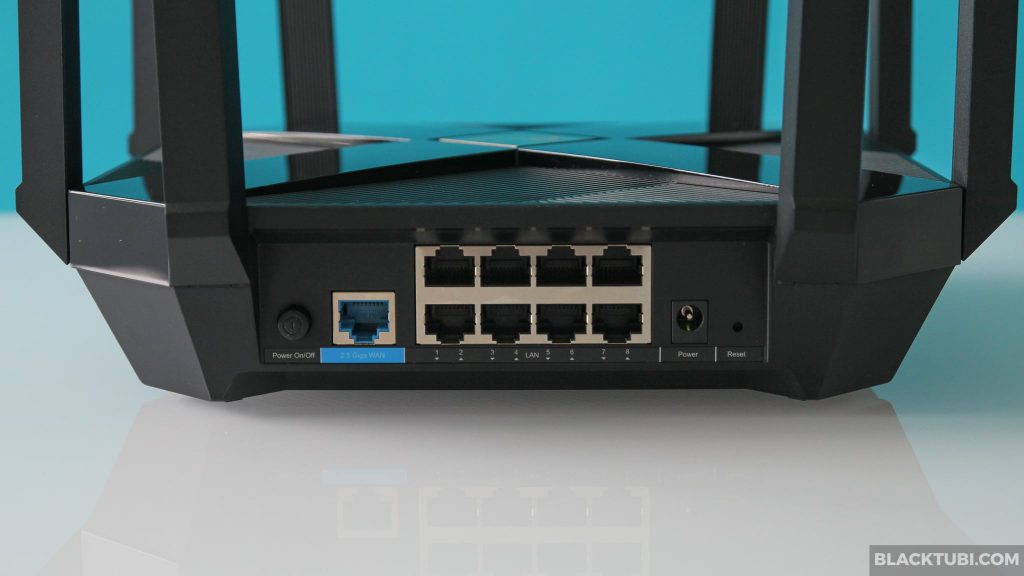
TP-Link is definitely not cutting corners on the Archer AX6000. It has a 2.5G WAN port instead of a Gigabit Ethernet WAN port found on most routers. There are also 8 Gigabit Ethernet LAN ports which some users will really appreaciate. We also noticed that TP-Link used a shielded Ethernet jack on this product instead of plastic ones on their cheaper products.
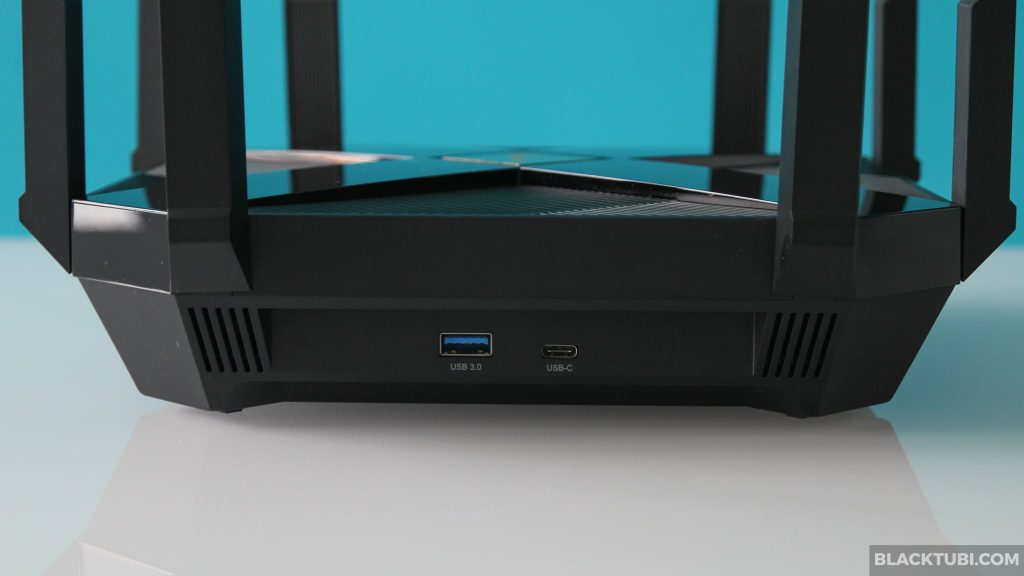
There’s also a single USB 3.0 port and a USB Type-C port on another side of the router. You can use the USB port to share files or printer on the network. The router can also function as a TimeMachine backup server if you use an Apple MacOS computer.
Archer AX6000 Setup Guide
Setting up the Archer AX6000 is similar to all TP-Link wireless router, the firmware is very user friendly and easy to navigate around. The setup process can be done either by using the TP-Link Tether app or via the default web interface of the router.
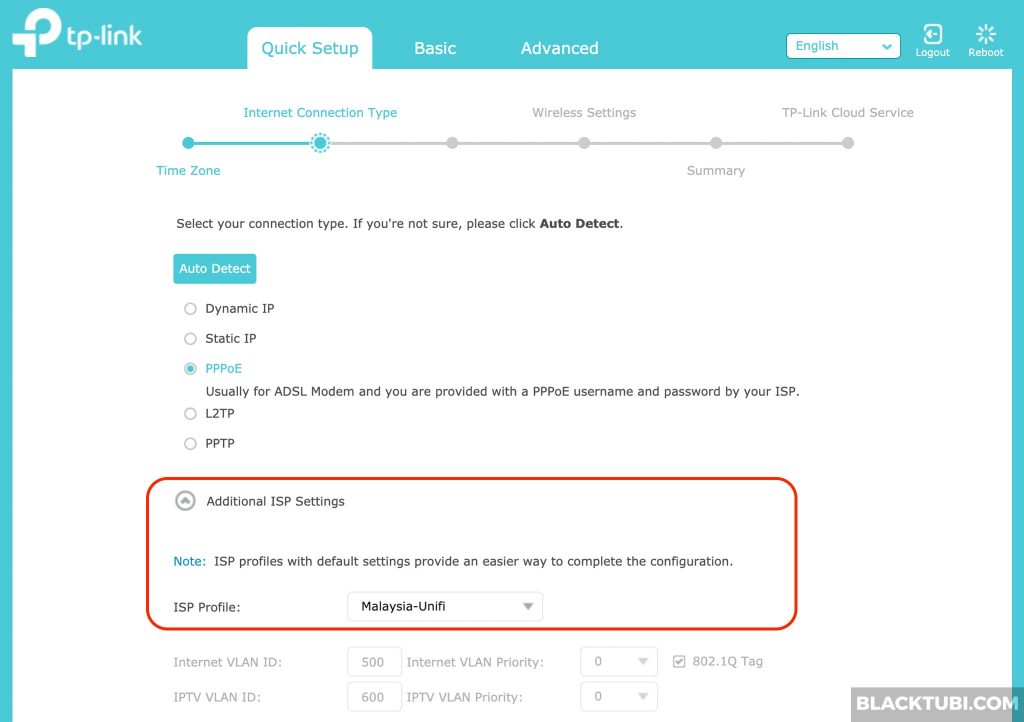
For most users, the setup will involve connecting the router to the modem provided by your Internet service providers and setup it using the PPPOE mode. The PPPOE username and password of your Internet subscription can be obtained from your Internet service provider.
For those residing in Malaysia, you’ll need to select the VLAN profile when using the router for Unifi or Maxis Fiber. No profile is required for TIME Broadband. It’s also worth mentioning that the Archer AX6000 can support Unifi with the HyppTV service working properly.
Wi-Fi Performance Test
We will be testing the Wi-Fi performance of the Archer AX6000 using TP-Link Archer TX3000E and also a Samsung Galaxy S10 both with Wireless AX ability. I am having a Gigabit Internet connection with 500Mbps upload speed.
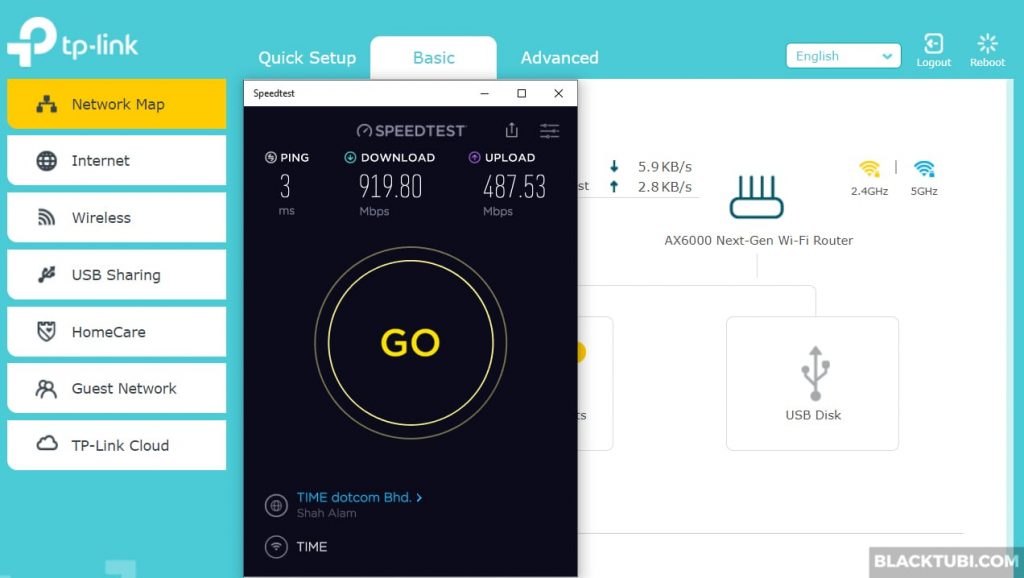
On the peak performance testing at a short distance, the Archer AX6000 can reach over 900Mbps when testing on our desktop with the TP-Link PCIE Wi-Fi 6 adapter. This test will show us what is the maximum speed the router can deliver under the best condition.
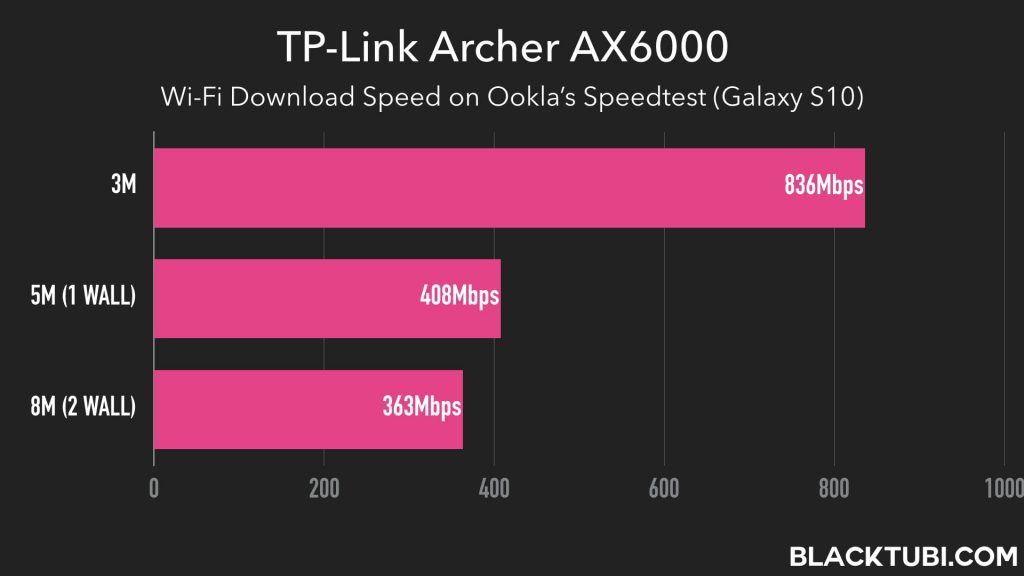
On the second test, we wish to see how well the router performs when the wireless signal is lower. We test the Wi-Fi speed at multiple spots of my house ranging from no walls to 2 walls between the wireless router. At every test location here, it performs better than any old Wireless AC router I had.

TP-Link Archer AX6000 performs decently in our test and it is a huge step up in performance from the previous Archer C5400 or C3150. The Smart Connect is really handy as it combined both Wi-Fi bands under a single Wi-Fi name. I suggest enabling it as it works rather well in my test.
Firmware and Features
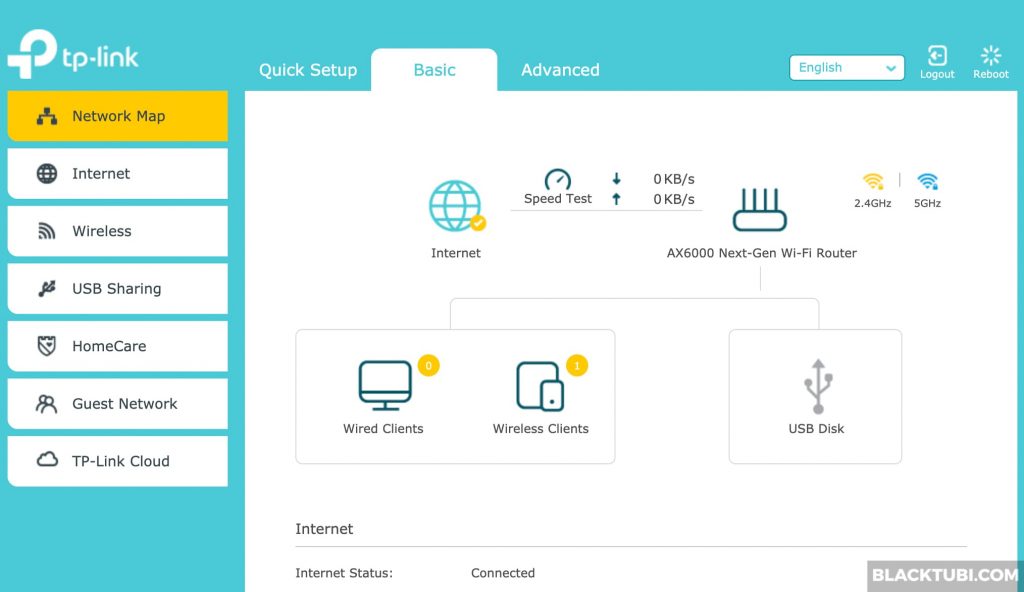
The Archer AX6000 is TP-Link high end wireless router and it gets all the bells and whistles from TP-Link. The interface is very simple and it works really well. The router also performs really stable in our test without any crashes.
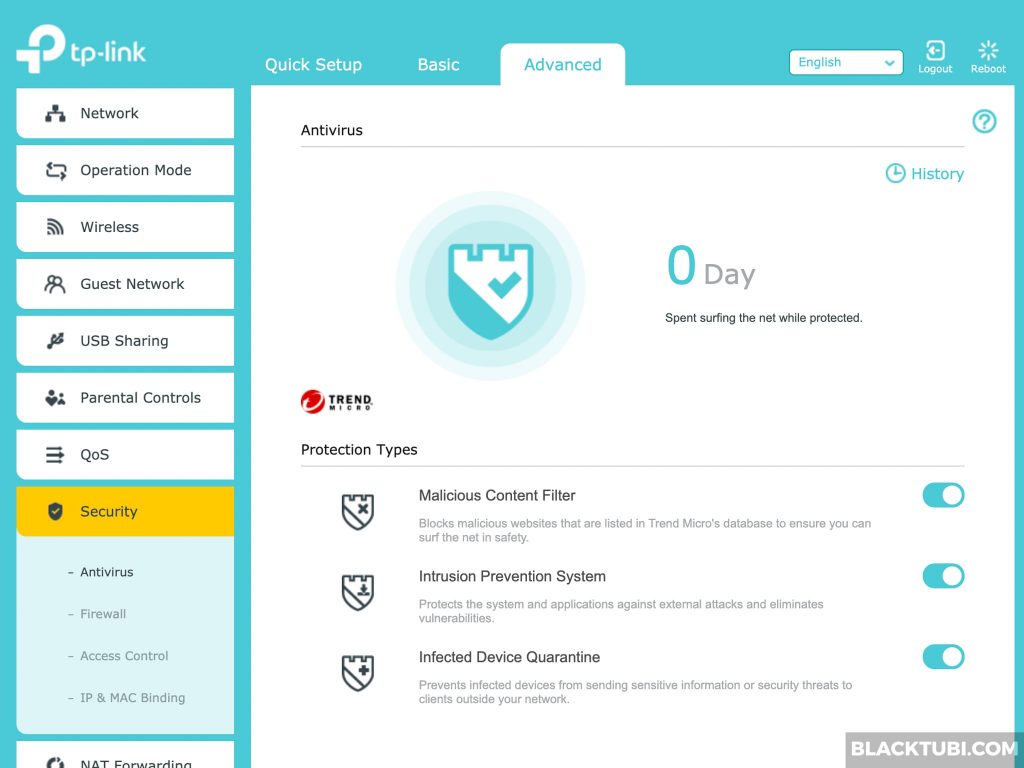

It has the TP-Link Homecare Antivirus suite which is powered by TrendMicro. This feature will attempt to block a malware or virus infected website. It works pretty well in our test with our test websites effectively blocked by the Antivirus engine with a warning shown. We recommend enabling this feature on your router.
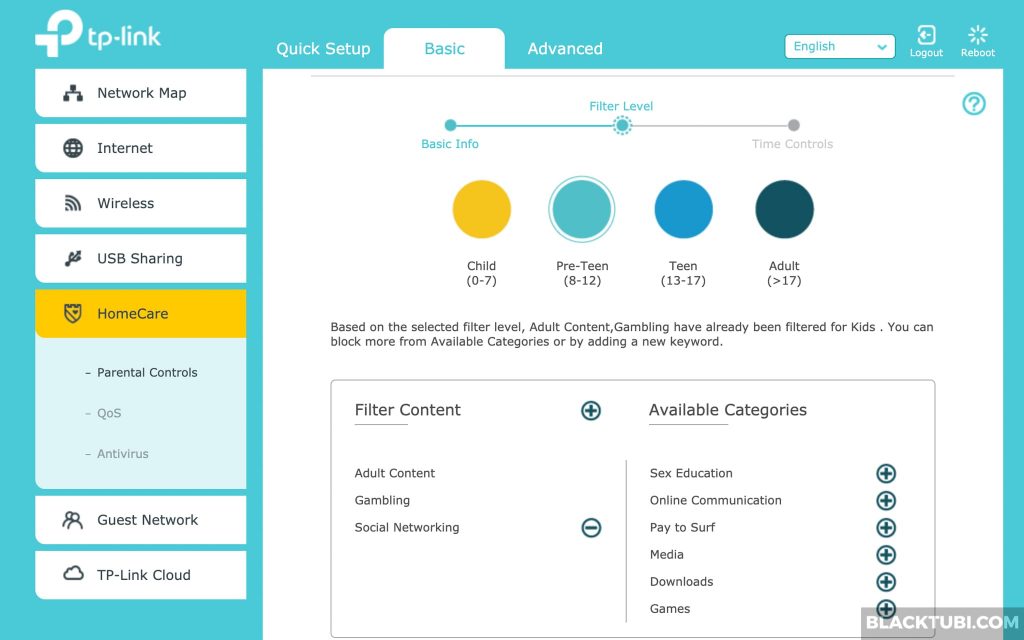
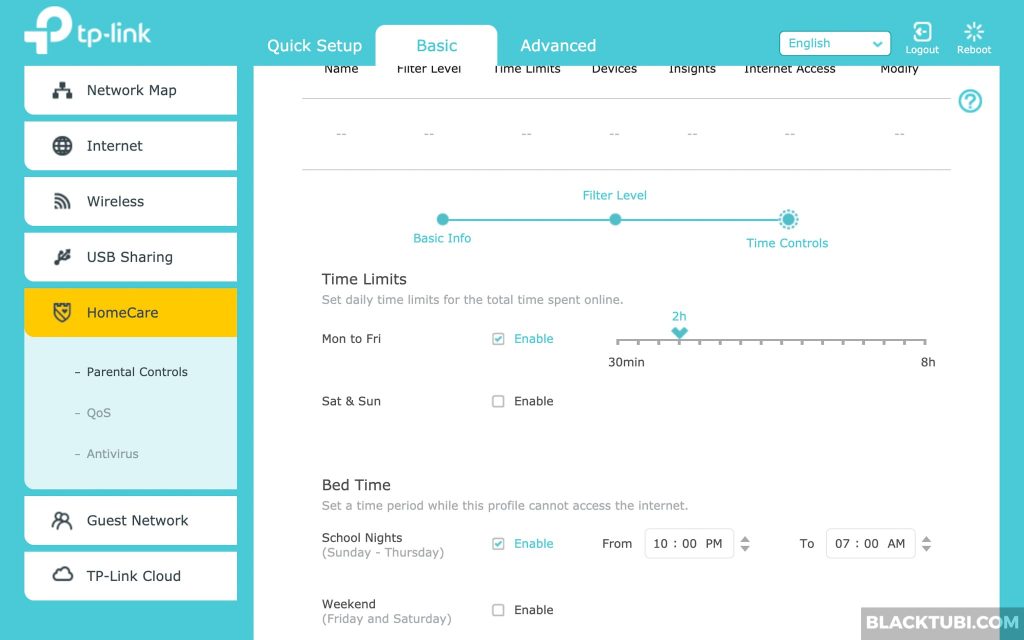
The included Homecare parental control feature is also really great. It can block webpages for selected devices based on preset category of websites. Besides, you can also configure usage time limit and days where Internet will be restricted. This is a handy feature for parents and it can be configured either by using the Tether app or web interface.
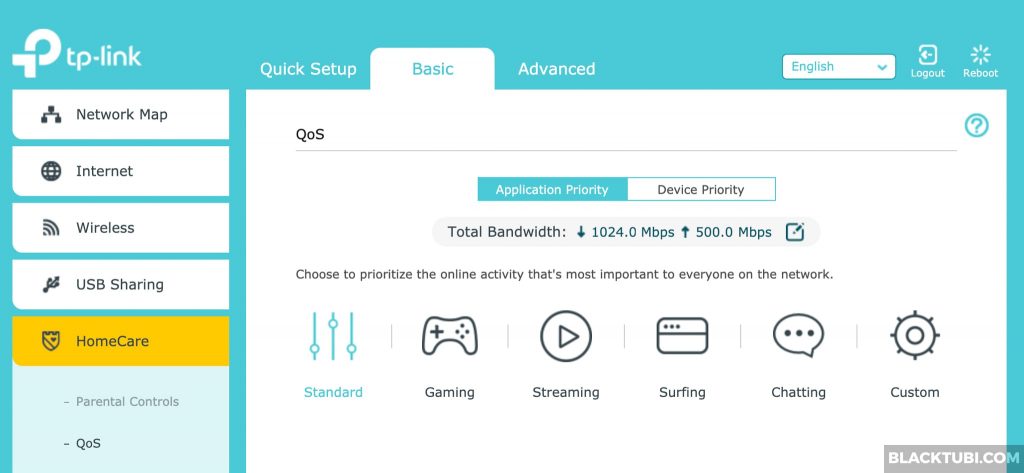
The router also has a QoS feature which lets you to select which category of apps you wish to prioritize. Remember to set the correct bandwidth manually as the router might detect incorrectly. There’s a gaming profile which is supposed to help with gaming performance.
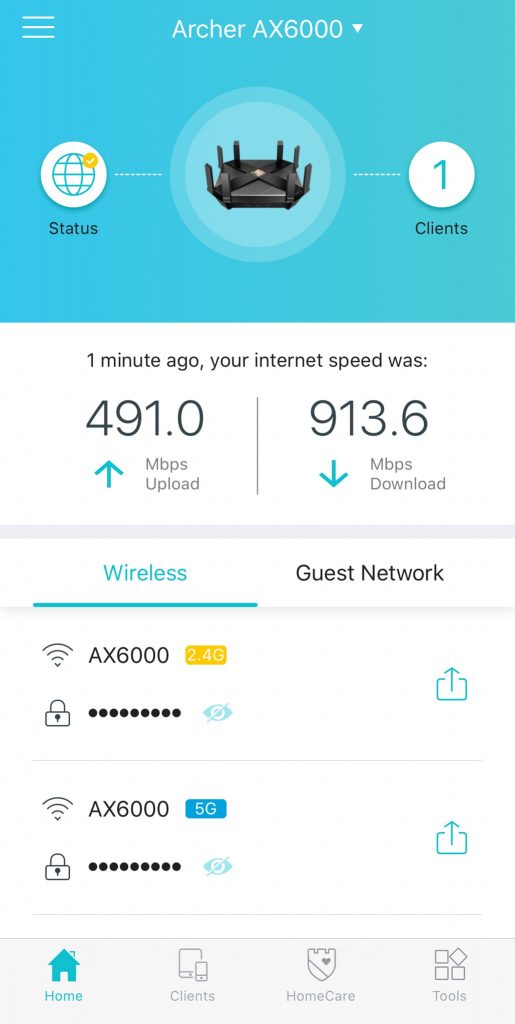
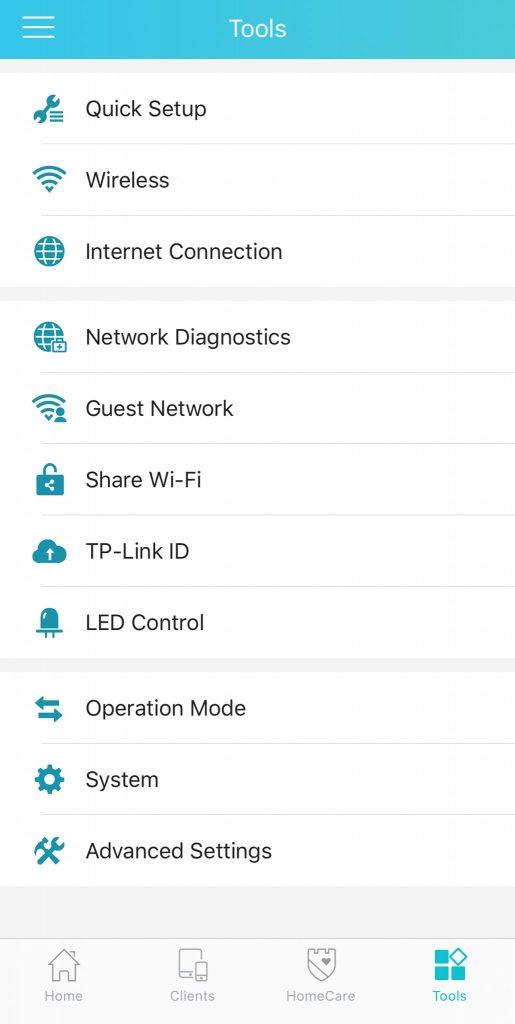
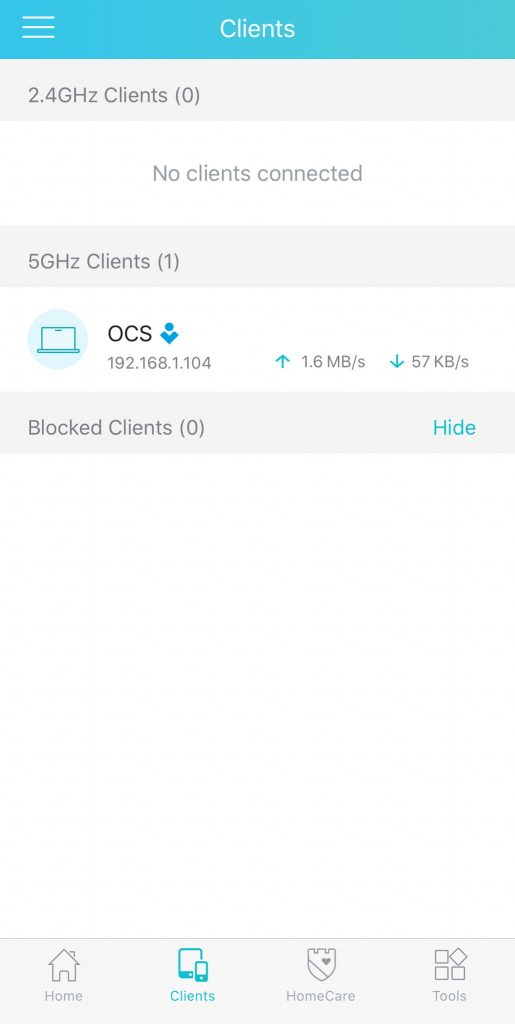
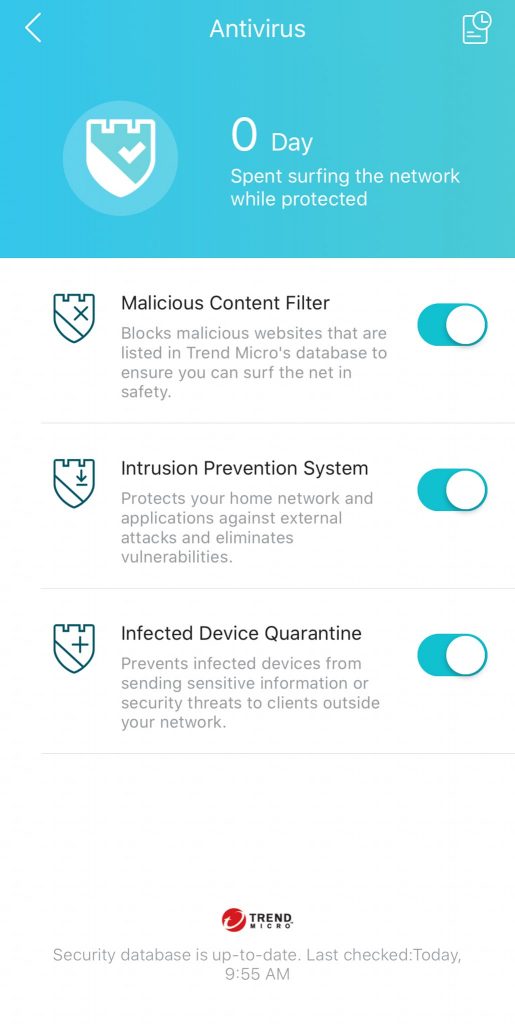
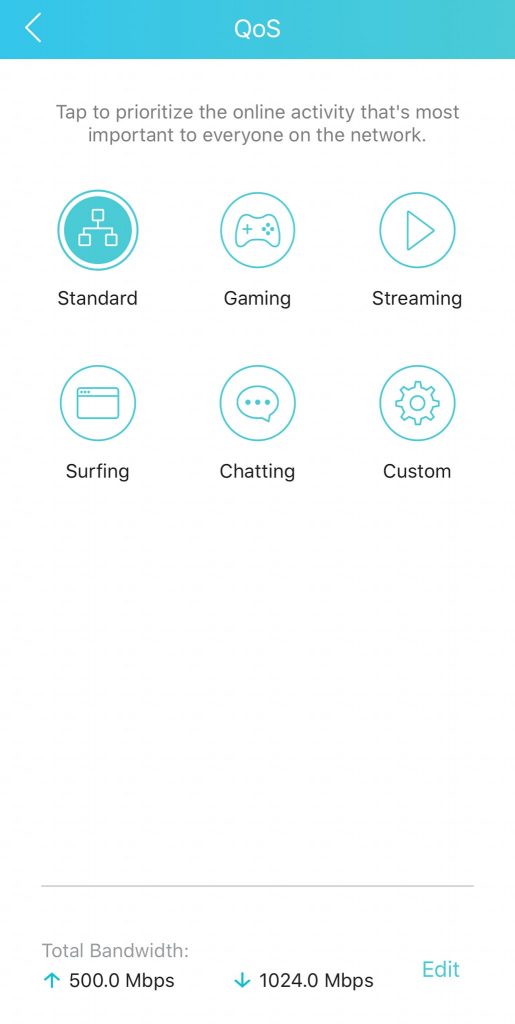


I also really liked the TP-Link Tether app as it’s really easy to use. You can view connected devices and perform speedtest on the app itself. TP-Link apps these days are really good and modern looking. The app also lets you to manage some of the features that comes with the router but the more advanced features are limited to the web interface.
Closing Thoughts
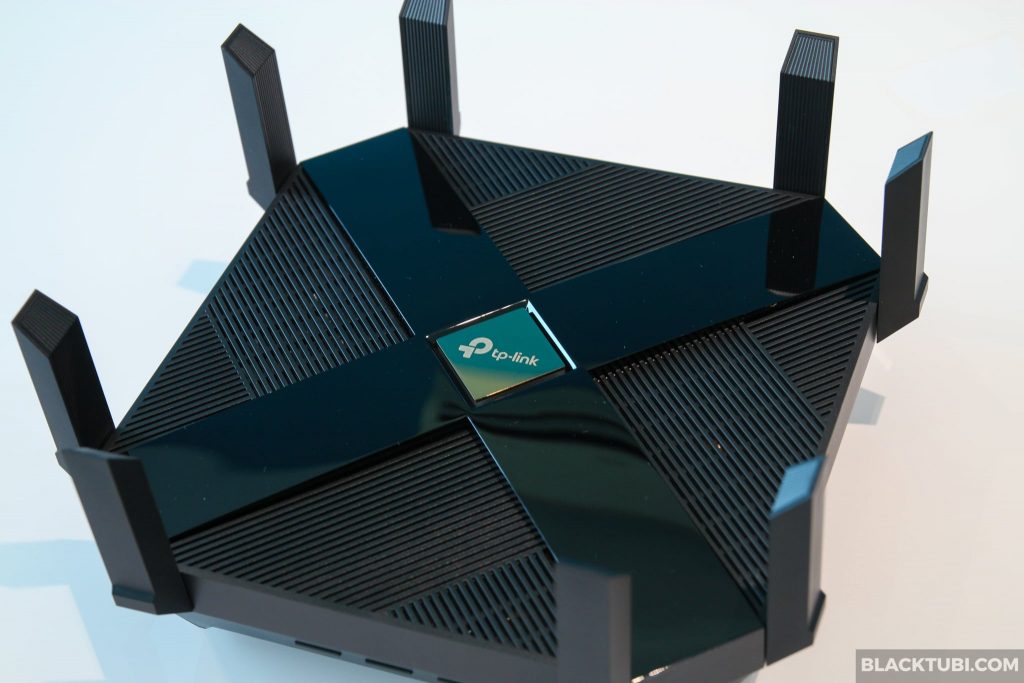
TP-Link Archer AX6000 is a great high performance wireless router. There are no corners cut and it offers a really strong Wi-Fi signal with extremely fast speed. The high performance quad-core CPU combined with the strong Wi-Fi coverage will provide reliable networking solution for most household.
Now, the best part of TP-Link’s Archer AX6000 is the price. It undercuts most AX6000 wireless routers in the market while providing a better specifications and slightly better performance figures. It makes the Archer AX6000 hard to resist if you’re shopping for a high performance WiFi 6 router.
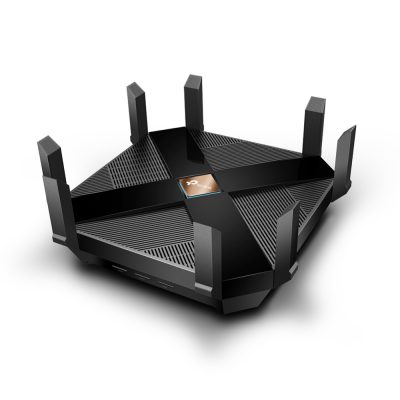
TP-Link Archer AX6000
9.2
Tubi Rating
Good Stuff
- 2.5G WAN Port + 8 Gigabit LAN Ports
- Great Wi-Fi Performance with really strong WiFi coverage
- Relatively cheaper than competing AX6000 class product
Bad Stuff
- Only one status LED indicator

Hai,
currently im using stock modem from UNIFI 800MB DLINK AX3000
im hosting game for 50-60 user.
thinking upgrading my router. (my current router can only support up to 20 people.anything more than that server will crash and lag)
im thinking either this router or MIKTROTIK RB4011iGS+5HacQ2HnD-IN.
but i dont want to waste money on overkill router.
what do you think?
Thank you
The Mikrotik RB4011 is a great product but it requires quite some effort to get it running properly. I believe the Archer AX6000 should be powerful enough.
How is this compare with Ax73 Ax5400? Will newer router better than this?
The Archer AX6000 is still the better than the Archer AX73 despite being several years old now.
Hi,
There are a lot of People complaining about the firmware and losing connections on the 5Ghz after some time. Did you experience this?
Gr,
Mark
Not really, perhaps you can try to update the WiFi driver on the device you use. Wi-Fi 6 is still a new technology, there are still some compatibility issues especially with Intel WiFi adapters on older drivers.
Hi,
How is this router compared to Archer C5400X and Archer Ax11000? Which is faster?
Thanks.
The Archer AX6000 is faster than C5400X and performs similarly to the Archer AX11000. The benefit of the Archer AX11000 is the gaming enhancement and the second 5Ghz band which will help with performance when you have more devices connected to reduce crowding.